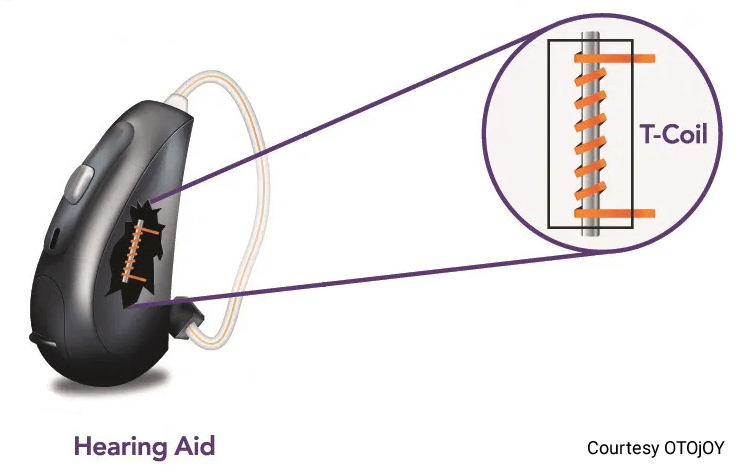Telecoils for Hearing Instruments
A telecoil augments the effectiveness of your hearing aids, cochlear implants, and bone-anchored devices – and provides access to ADA assistive listening systems. When purchasing new or replacement hearing aids or cochlear implant processors, seriously consider models with telecoils and Auracast capabilities.
Why do I want a telecoil?
- A telecoil gives you clarity in thousands of public and private facilities in your community and around the world. Since a telecoil is universal, you can use it in theaters, airports, government meetings, places of worship, or even a home TV hearing loop (this website) or tour guide system. These systems are required under the Americans with Disabilities Act (ADA) (this website) and disability regulations in each country.
- Listen to the difference that a telecoil makes (1-minute videos, this website)
- A telecoil connects you to systems that are already installed: 1) hearing loops and 2) FM/RF and infrared systems, via a neckloop.
- How do telecoils work? A telecoil connects your hearing aid (wirelessly) to the public address system in the place you are visiting, via an assistive listening system.
- Ideally the telecoil is included in your hearing instrument and NOT a proprietary device.
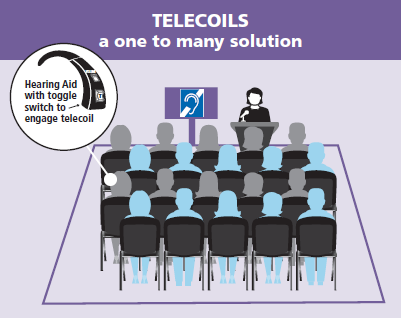

Auracast™ and Telecoils
Auracast is built into the hearing instrument. Telecoils are best built into the hearing instrument as well (and not a proprietary device).
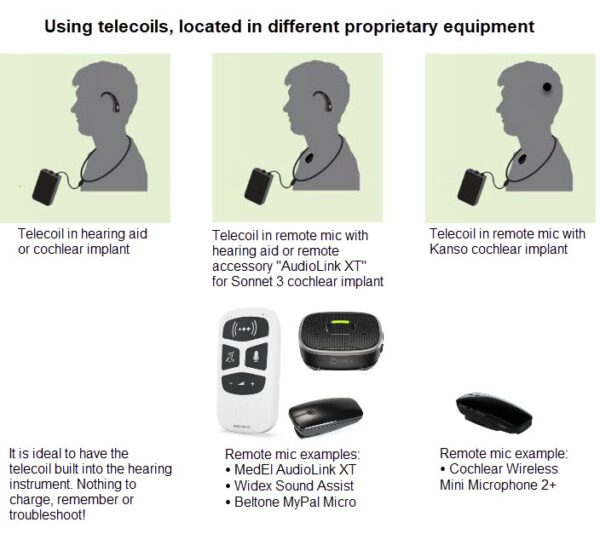
To ensure access for ALL assistive listening systems, anywhere in the world, today and tomorrow, it is critical that consumers have fully “ADA-Access-Ready” hearing instruments critically require:
- Both telecoil and Auracast connectivity embedded in the hearing instruments, and not merely offered in an accessory device. Buying hearing aids in the next 5-7 years? Here is a list “ADA-Access-Ready” Hearing Instruments List (3 pages, pdf)
- A single push-button access (direct-to-hearing instrument connections) for both telecoils and Auracast. No intermediary device to be required, at least for connection to the dedicated assistive listening stream. To date, no hearing aid nor cochlear implant has this Auracast ability. This capability exists with telecoils and hearing loops.
- Sterkens, J. (4/2/25) “Auracast is Here!” Now What? HearingTracker
- Whyman, W. (April 2025) “A Push for Hearing Devices that are ‘ADA-Access-Ready’ Hearing Health Foundation, Quarterly publication. 4 pp.
- Sterkens and Whyman (January 2025) Helping People Hear Anywhere with Telecoils and Auracastfeature article, Canadian Audiologist
Working with a hearing aid provider to include telecoils
Audiologists and hearing instrument providers are responsible for providing devices that permit users to hear in as many places as possible, activating built-in telecoils, demonstrating the benefits of all features, and educating the user.
If your provider doesn’t bring the topic up, ASK.
Many people with hearing aids don’t know if their hearing aid has a telecoil or how to use it. Ask your audiologist or hearing instrument specialist if your hearing aid has a telecoil, make sure it’s activated, and ask for instruction in using your telecoil program.
Audiologists and hearing instrument specialists can “refresh” their skills by taking online courses for CEU, and take advantage of free materials. Resource webpage (this website)
BIHIMA (UK hearing aids) report that shows there were a total of 621,855 Hearing Instrument sales in 2025 Q1 for UK. 79% (491,194) had telecoils [sold via the NHS]
It is difficult to get this information for the United States.
If you’re considering buying hearing aids soon, make sure you consider telecoils before you buy. 3 suggestions:
- Some manufacturers use a “T” in the name to let you know the hearing aid has a telecoil. The Oticon Opn miniRITE T or Signia Pure Charge&Go T IX are examples.
- Check out HearingTracker’s (webpage) hearing aid comparison tool— which allows you to compare hardware and software features, sound quality, and accessories between hearing aid models—and look for the telecoil feature. HearingTracker provides independent and unbiased product reviews.
- List of “ADA-Access-Ready” hearing instruments (3 pages, pdf). by Center for Hearing Access, and is also available below.
Most prescription hearing aids and all cochlear implants have telecoils in the device or in an accessory, such as a streamer or remote microphone.
OTC Hearing Aids. Only one OTC hearing aid has a telecoil, the Lexie Lumen (webpage)
- Article OTC Hearing Aids – Why No Telecoils? Article by S. Frazier. November 6, 2022 (webpage)
You will often need to ask. Sadly, many Audiologists and Hearing Instrument Specialists do not include telecoils or activate them in prescription hearing aids.
Legislation summary that includes counseling patients about telecoils in hearing instruments, assistive listening systems, or building standards (19 pages, pdf)
The best time to get a telecoil is during purchase. Depending on the hearing aid manufacturer, after manufacturing, you may be able to add a telecoil with an accessory (streamer or remote microphone) or sometimes the battery door can contain a telecoil.

Yes – but should be included at the time of order. Sometimes, the telecoil can sometimes be added (cost could be in the $100/$150 range) if the devices are still under warranty during the first and second year.
Telecoil Activation
Easy to adapt for FM/RF system
[Organization Name] is excited to announce the installation later this month of an assistive listening system known as a hearing loop. The new system will allow people with hearing loss to hear services/programs easily and clearly with the use of their own hearing aid, cochlear implant, or a borrowed receiver with headphones.
How to use the hearing loop
If you have a hearing aid, you likely have a feature known as a telecoil or “t-coil” in it. This feature is not automatically activated by audiologists or hearing instrument specialists, but is present in most hearing aids and all implants on the market today. Someone using a hearing aid will be able to use the new assistive system by simply switching to the t-coil program on their hearing aid or cochlear implant. If you are not sure if your hearing aid has a telecoil program or whether it is activated, contact your hearing provider. We encourage everyone with hearing aids to inquire about the telecoil sooner rather than later, so that when the hearing loop installation is completed later this month, you can use the system with your hearing aids or cochlear implants.
Receivers with headphones will be available for people to use if they don’t have hearing aids, or if their hearing aid does not have a telecoil in it. Stay tuned for more information!
For more information on telecoils, visit the Center for Hearing Access
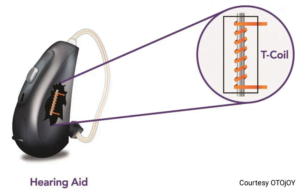
Many people with hearing aids don’t know if their hearing aid has a telecoil or how to use it. Ask your audiologist or hearing instrument specialist if your hearing aid has a telecoil, make sure it’s activated, and ask for instruction in using your telecoil program.
- Telecoil instructions (1 page, pdf) to take to your audiologist or hearing instrument specialist to add a “telecoil program”
Choosing whether to include a telecoil
- Consumer Reports Buying Guide (webpage)
- Hearing Loss for Dummies, AARP Book, “The mighty telecoil” by Doctors Lin and Reed (webpage)
Classic Bluetooth and telecoils are different technologies and are designed for different situations.
- Classic Bluetooth currently helps you connect to personal devices such as your TV, smartphone, or tablet, but it has a limited range, and the technology in hearing instruments is often proprietary, not universal.
- Auracast™ broadcast audio is a new Bluetooth® capability. For Auracast streamed assistive listening, there are extremely few facilities with this technology. The international standard is not finished (2027) and 99% of users do not have hearing instruments with Auracast. Read more about Auracast streamed assistive listening (this website)
Telecoils are a very inexpensive hearing aid component and does not inflate the cost of hearing aids.
See our webpages:
- how to use assistive listening systems (this website)
- Hearing aids (this website)
- Cochlear implants (this website)
Telecoils are very small. Compare the photo of hearing aids: one with a telecoil and one without – they are about the same size…
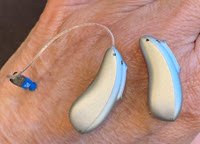
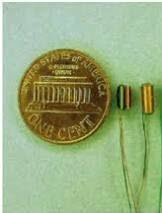
A hearing aid without a telecoil is like a car without air conditioning. You don’t need it all the time, but when you do, you’re sure glad you have it!
Your use depends on your activities. You may use your telecoil every day at work or maybe you have a home hearing loop. Or perhaps you will use your telecoil whenever you attend religious services or events in the community.
Telecoils may be found in the following devices:
- Remote personal microphones
- Streamers
- OTOjOY LoopBuds (webpage)
- Other assistive devices, such as the WilliamsAV Pocketalker 2.0 and BeHear Access (webpages)
Articles
- Remote Mics + Hearing Aids = a Perfect Pair. S. Frazier. Hearing Health Foundation. March 23, 2023 (webpage)
- No Telecoils? No Problem. S. Frazier. Feb 2023 (4 pages, pdf)
10/16/24
After a transition period over the next two to three-and-a-half years, the FCC will require that all wireless handset manufacturers and service providers, both nationwide and regional, in the United States must offer products and services that allow for connectivity with prescription and over-the-counter (OTC) hearing aids and cochlear implant (CI) processors, as follows:
- 85% are able to connect to telecoils without interference
After 50 Years, 100% of Phones Will Soon be Hearing Aid Compatible (HAC), HLAA (webpage)
Tools
How the hyperlinks work:
- image or title -> opens a new webpage with more information
- download icon at bottom -> direct download
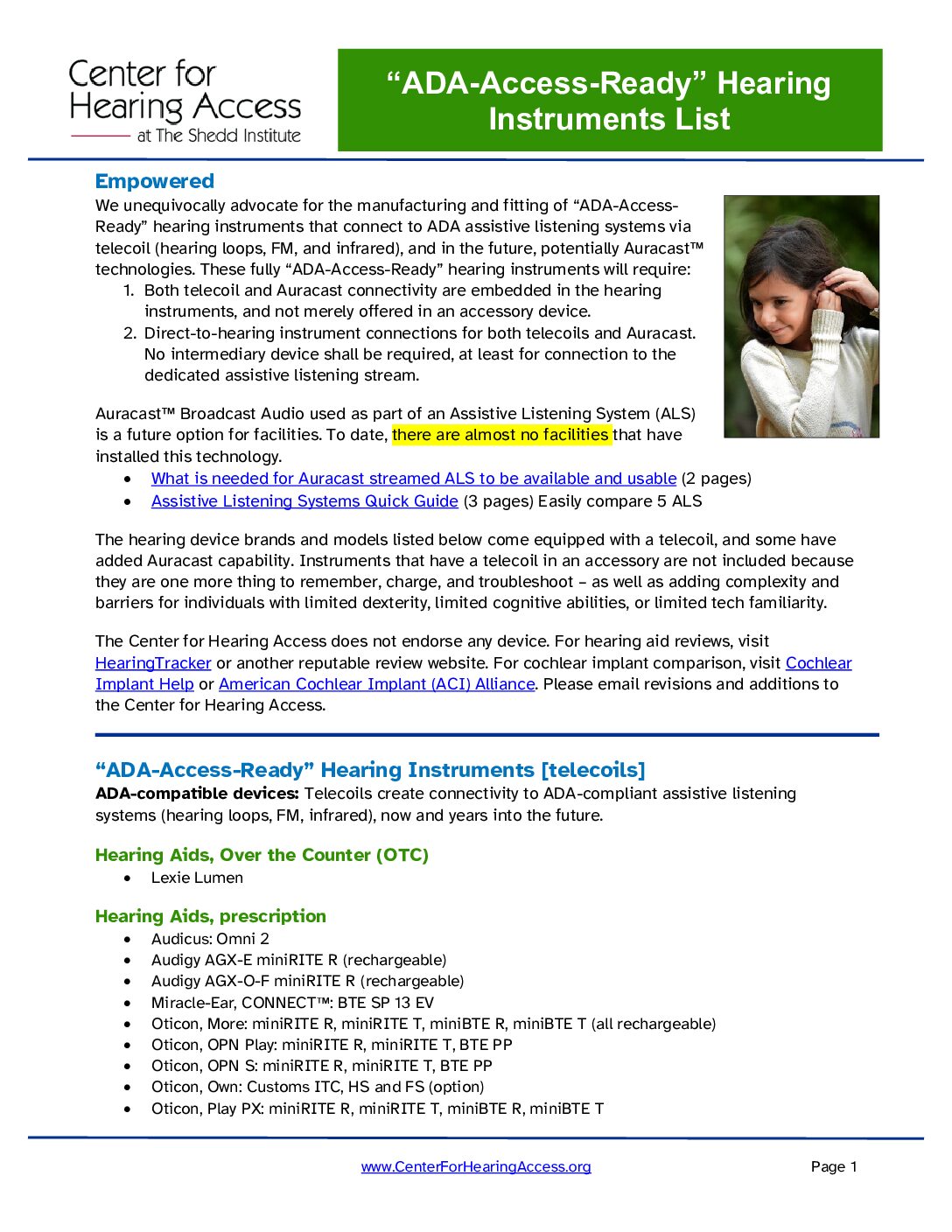
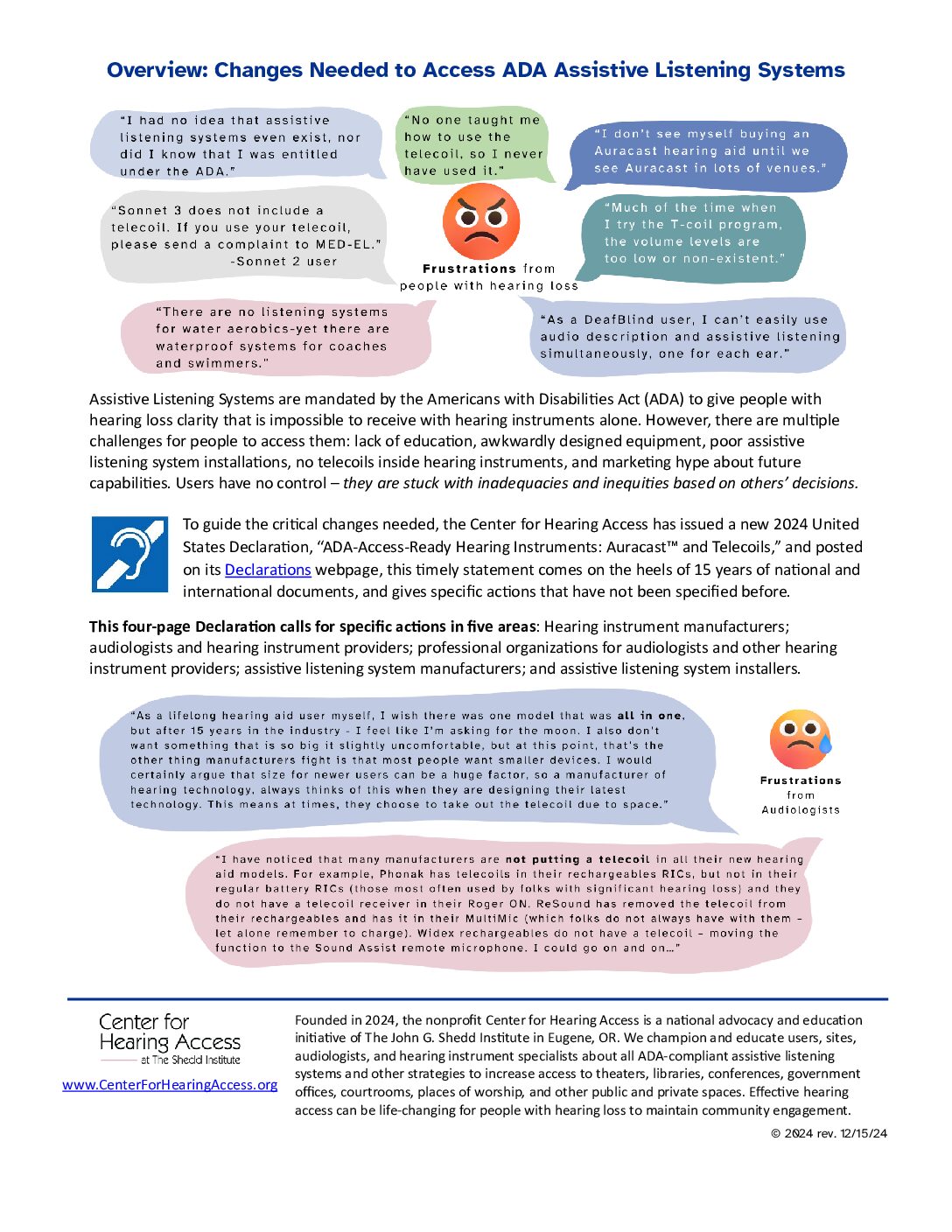
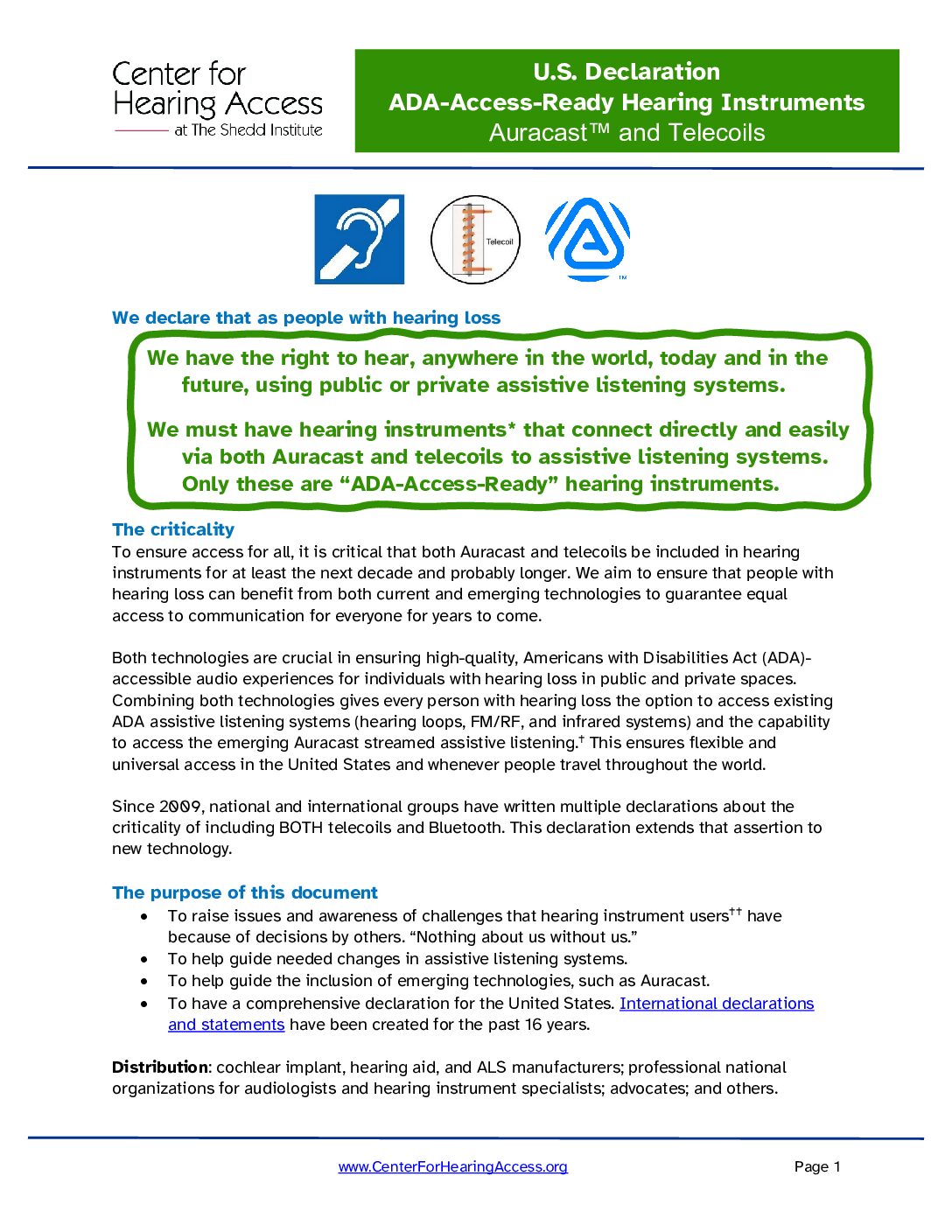
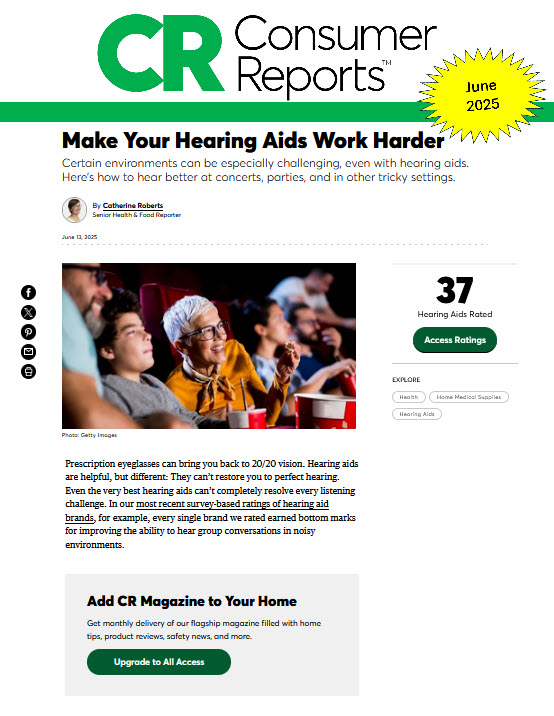

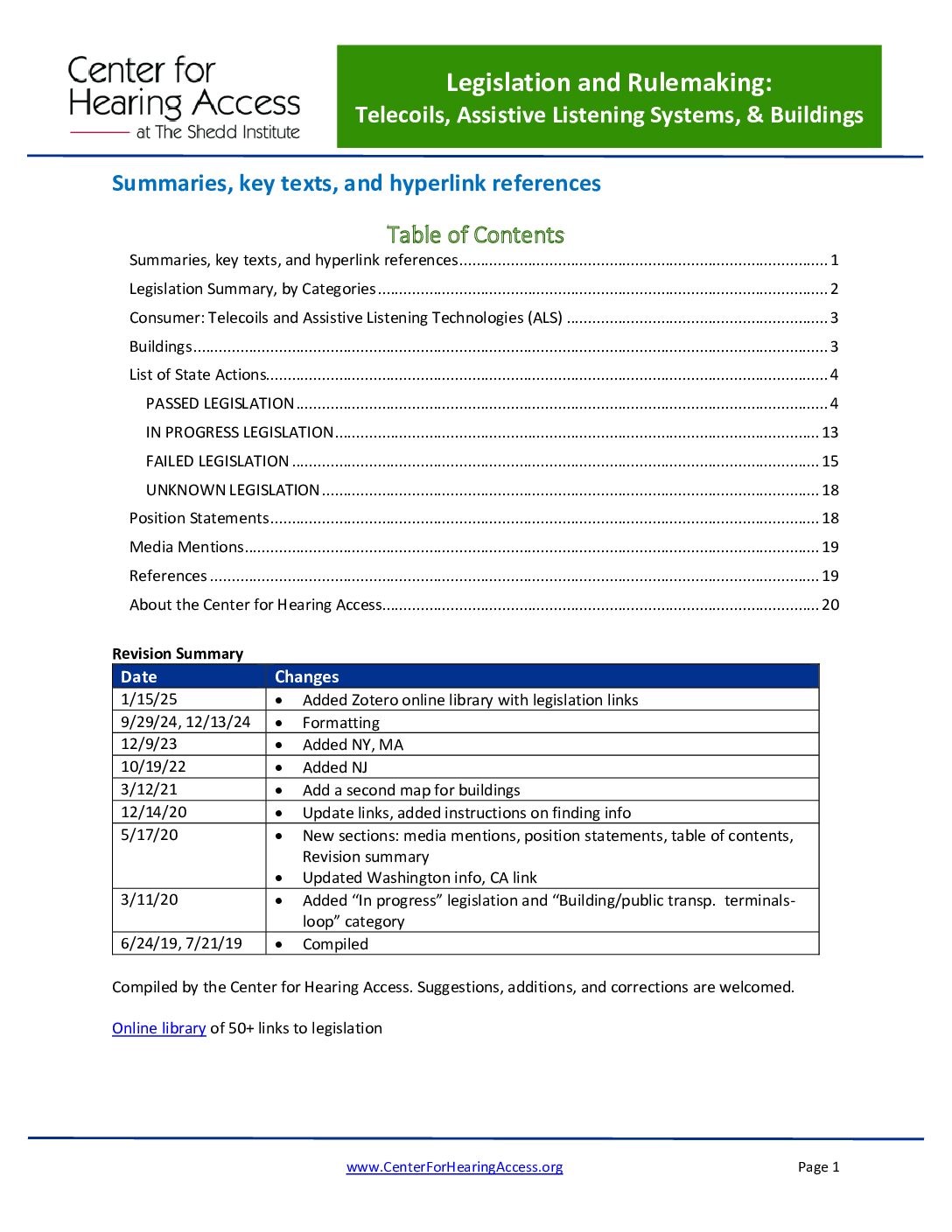
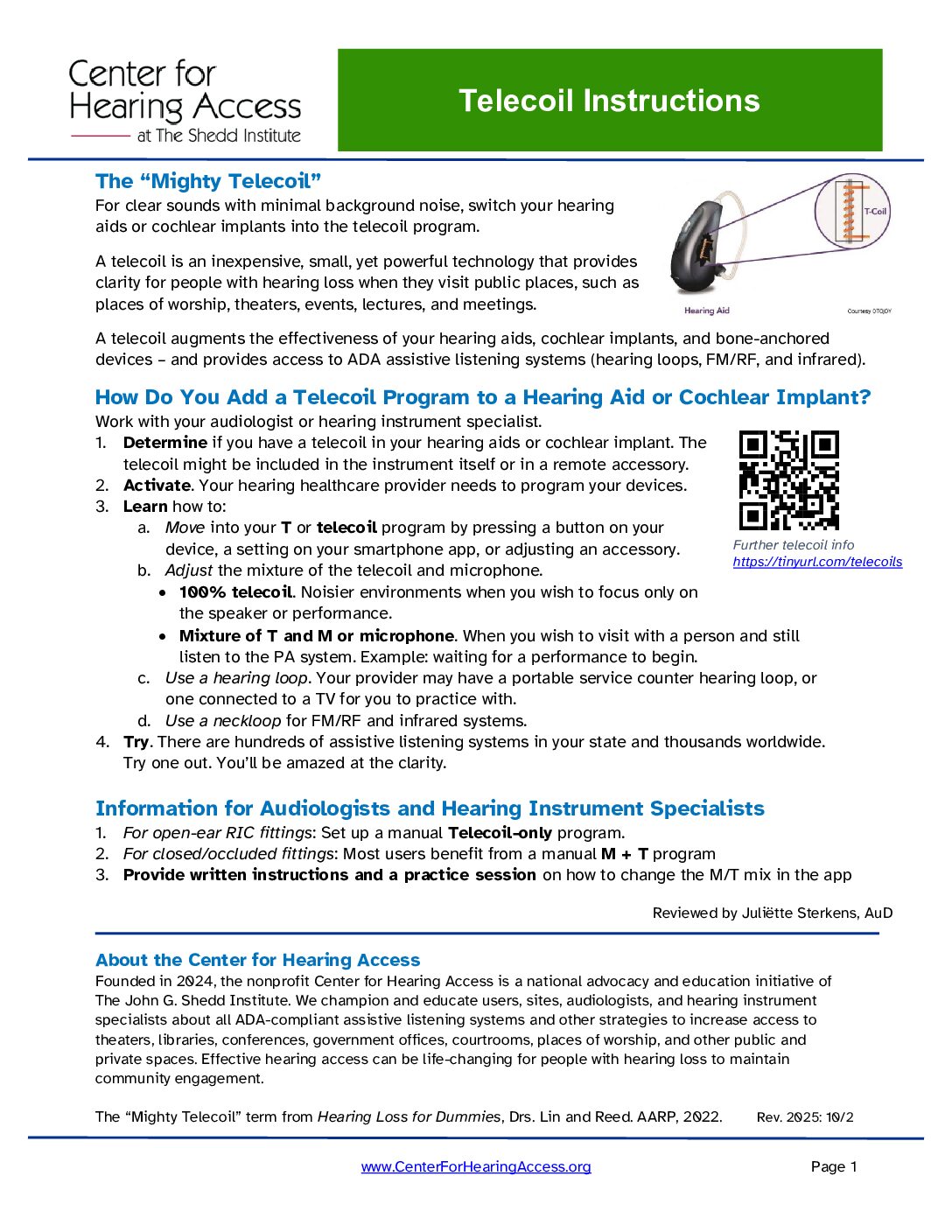

Resources
- “What is a hearing aid telecoil and why would I want one?” Healthy Hearing 2019 (webpage)
- All about telecoils (this website)
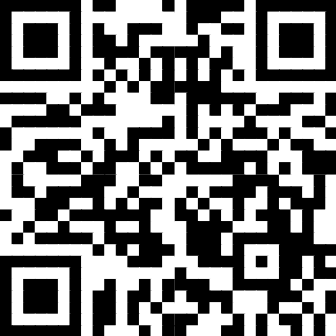
QR code for Verifit handout (pdf) Audiologists/hearing instrument specialists http://tinyurl.com/Telecoils-Verifit
Footnote to video *At the end of the video, there is mention of hearing loop ‘weak’ areas. In response: “If you are using a loop system and find a “weak” spot – it may be that the installation of the Hearing Loop does not meet the international standard (IEC 60118-4 code) for coverage, and you should let the owner/manager of that space know you had difficulty. They will contact their loop installer for analysis and repair as needed. When installed properly, a loop field reaches every activated telecoil equally well.” Audio Directions (installer’s webpage) in comments.

